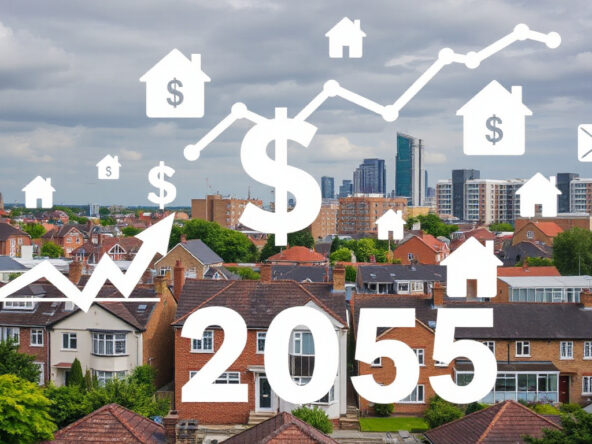In 2024, the UK housing market has experienced a robust resurgence, characterized by a notable increase of approximately
3.4% in house prices since the beginning of the year, culminating in an average price of £292,000 as reported in October (Nationwide Building Society, 2024). This upward trend is further corroborated by the Nationwide House Price Index, which recorded an even higher annual rise of about
4.7%. Market analysts have attributed this resurgence to bolstered buyer confidence arising from declining mortgage rates. Chief economist at Nationwide, Robert Gardner, indicated that despite ongoing affordability challenges, house prices have demonstrated a surprising resilience. As we look toward 2025, the potential for an initial surge in housing transactions is anticipated as buyers strive to secure properties ahead of predicted alterations to stamp duty. However, with the recent Autumn Budget suggesting fewer expected interest rate cuts and rising global inflation, the trajectory of mortgage rates may not decline as sharply as previously thought, posing future challenges for the market. Furthermore, while the HM Land Registry serves as a vital resource for understanding sold prices, it may not accurately depict current market dynamics, given that recorded transactions often reflect agreements established months prior.
Key Takeaways
- UK house prices experienced a robust recovery in 2024, with an increase of approximately
3.4% annually. - Falling mortgage rates have significantly boosted buyer confidence, resulting in unexpectedly resilient house prices despite affordability issues.
- The outlook for 2025 suggests a mix of increased transactions and slower mortgage rate decreases due to economic factors.
Current State of the UK Housing Market
The UK housing market has experienced a notable rebound in 2024, with house prices witnessing a substantial annual increase of approximately
3.4% as of October, pushing the average home price to around £292,000 (Nationwide, 2024). In fact, the Nationwide House Price Index reported a robust annual surge of about
4.7%, reflecting enhanced buyer confidence stemming from declining mortgage rates. According to Nationwide’s chief economist, the resilience of house prices is unexpected given the prevailing affordability challenges facing potential buyers (UK Finance, 2024). As we look towards 2025, the scenario appears mixed; an initial spike in transactions is anticipated as buyers rush to complete purchases ahead of impending stamp duty changes. However, predictions indicate that substantial interest rate cuts may be less likely due to the effects of the Autumn Budget and escalating global inflation, which could moderate any further reductions in mortgage rates (Bank of England, 2024). It’s important to note that while the HM Land Registry offers credible data on sold house prices, it may not accurately capture current market dynamics, as several transactions reflect agreements concluded months prior to completion, potentially obscuring real-time market conditions.
Predictions for Future Trends and Challenges
As the UK housing market evolves, various factors will shape future trends and challenges. Analysts suggest that while buyers are currently buoyed by falling mortgage rates, persistent affordability issues may dampen long-term growth (Knight Frank, 2024). Consequently, the housing market could see a divergence where premium properties may perform well due to high demand from affluent buyers, while affordable housing segments may struggle (Savills, 2024). Additionally, ongoing geopolitical tensions and rising global energy costs could impact both construction costs and consumer confidence, potentially stalling the market’s momentum. Experts advocate for a focus on sustainable development and energy-efficient housing, given the increased awareness of climate change implications. Enhanced governmental policies targeting housing supply and affordability will also be crucial to addressing the disparities in access, particularly for first-time buyers (House of Commons, 2024). Overall, while optimism surrounds the near term, the landscape remains complex, necessitating a careful consideration of both economic indicators and socio-political developments.




